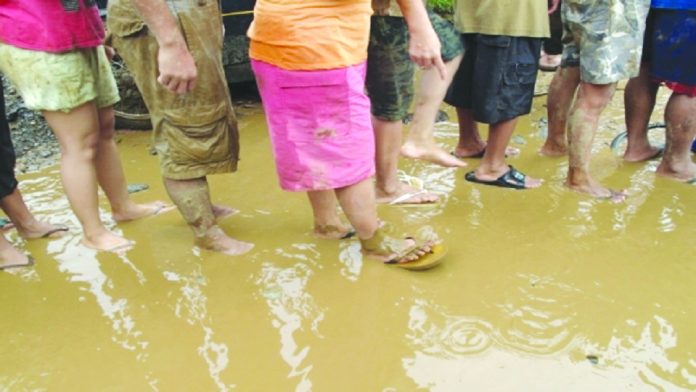
ILOILO City – The Department of Health (DOH) in Region 6 has issued a public health alert following a significant rise in leptospirosis cases across Western Visayas.
As of Nov. 18, 933 cases and 78 fatalities have been recorded this year, a notable increase from 2022’s 557 cases and 77 deaths.
Leptospirosis, a bacterial infection often contracted through contact with contaminated water or animal urine, has been particularly rampant during the rainy months.
Dr. Mary Jane Roches Juanico-Esteva, head of DOH-6’s Regional Epidemiology and Surveillance Unit, emphasized the urgent need for public awareness, especially in high-risk areas.
“If magka-open wound like those nga may mga co-morbidity, diabetes, and who are working sa aton farms, dapat may ara sang protective equipment or boots nga ginagamit sa palayan kay dira gid kalabanan ang sources sang aton leptos,” she said.
The recent data shows a worrying trend in Iloilo City and Iloilo Province, with case increases of 370% and 184%, respectively.
Other affected areas include Aklan (10 cases, 3 deaths), Antique (152 cases, 9 deaths), Capiz (51 cases, 7 deaths), Guimaras (37 cases, 4 deaths), Negros Occidental (177 cases, 22 deaths), and Bacolod City (83 cases, 15 deaths).
Notably, November saw a significant jump in the attack rate, with an average of 11 cases per 100,000 population, up from seven in 2022.
However, the case fatality rate has decreased to 8.5% per 100,000 population from last year’s 13.8%.
Juanico-Esteva urged the public, particularly those in high-risk occupations like farming, construction, and labor, to take precautions such as wearing protective gear and avoiding contact with potentially contaminated water.
Those aged 21 to 30 and working as farmers, construction workers and laborers are the most affected demographic, DOH-6 data showed.
DOH-6 is providing post-exposure prophylaxis in flood-affected areas to prevent the spread of the disease.
Early symptoms of leptospirosis include fever, headache, muscle pain, eye redness, abdominal pain, jaundice, and skin rashes.
“We advise them nga immediately after makakadto sa baha, may ara sang gina-provide nga post-exposure prophylaxis; in case nga may makuha sila nga kagaw nga naga-cause sang leptos, immediately ma-untat ina sia kag indi maglapta sa bilog nga lawas,” said Juanico-Esteva./PN




